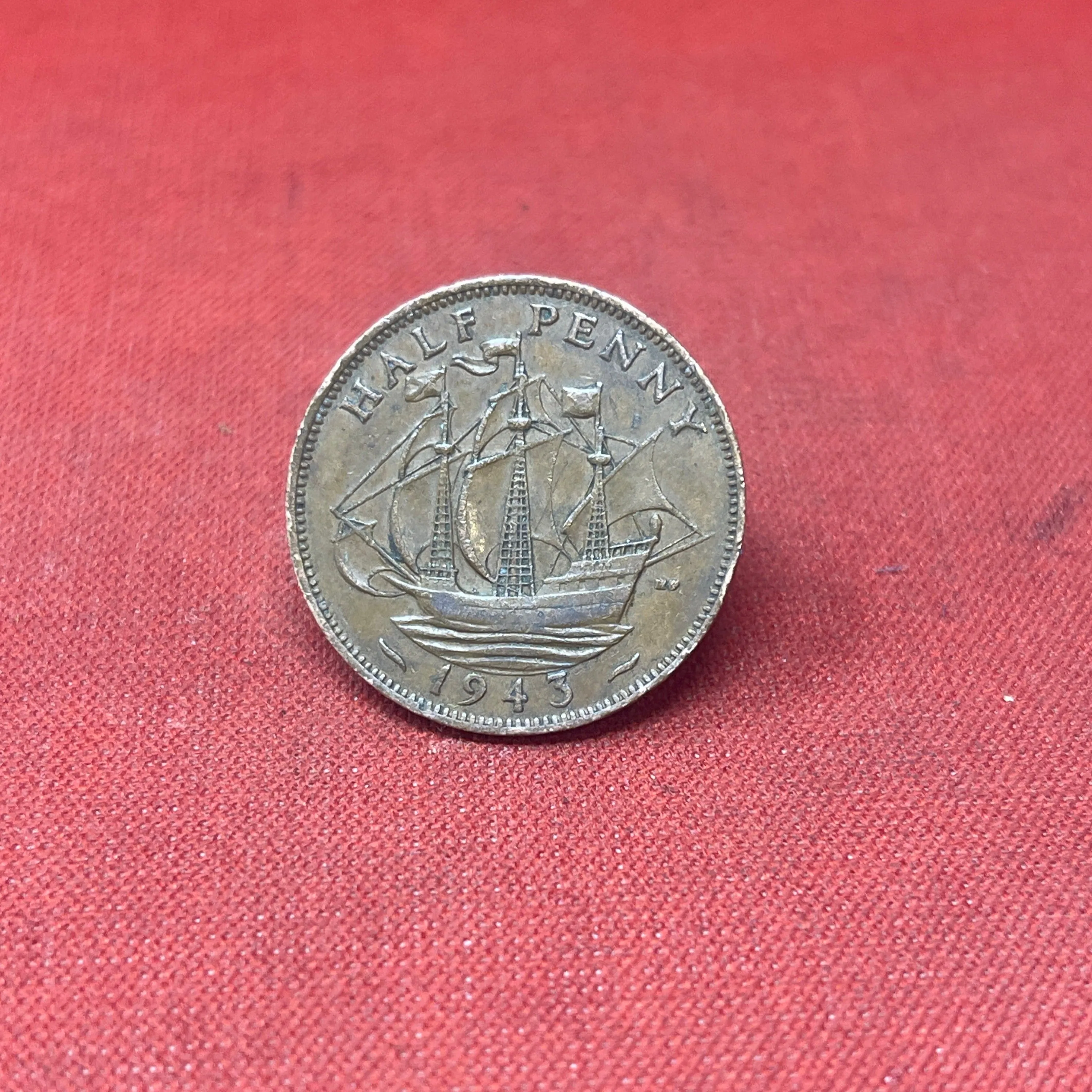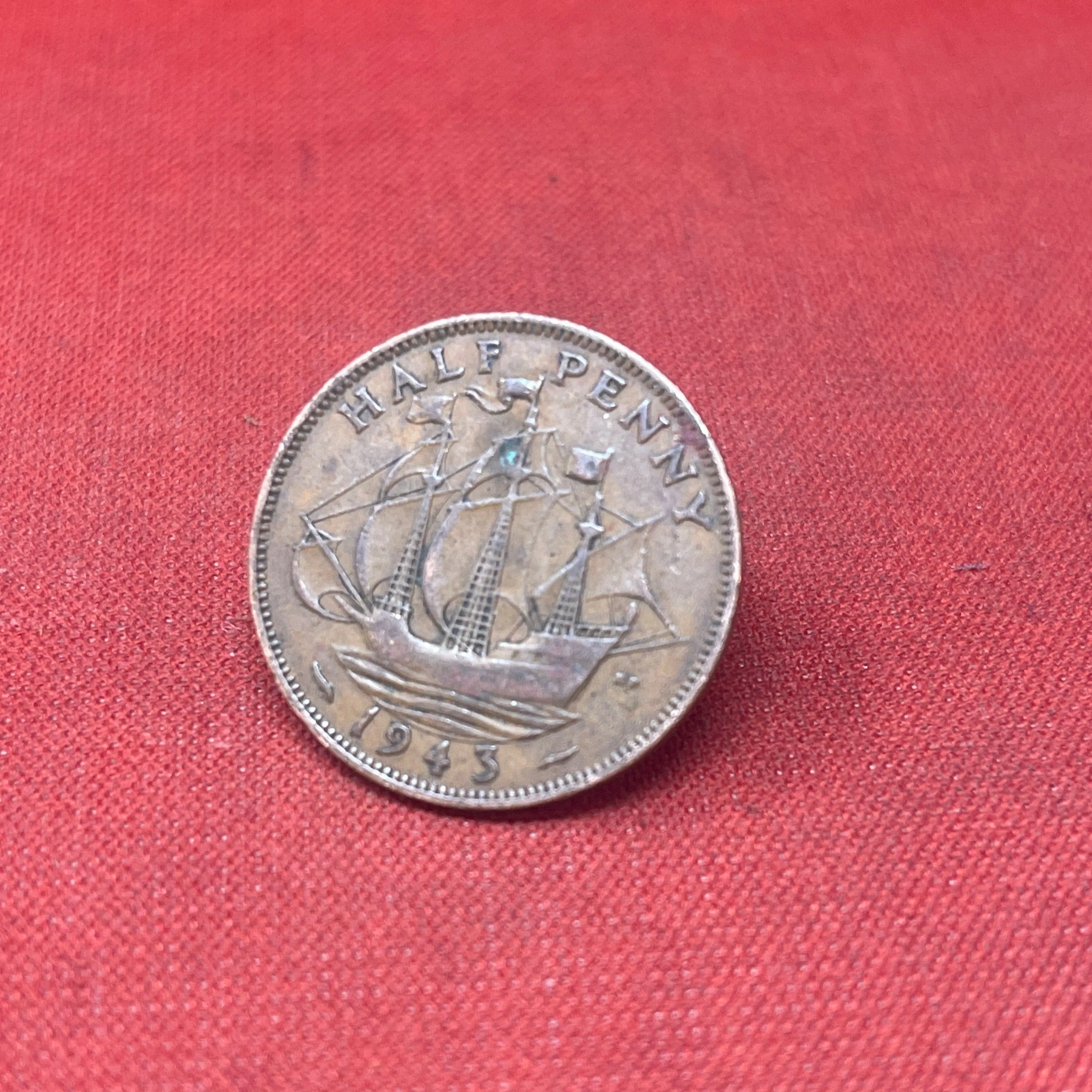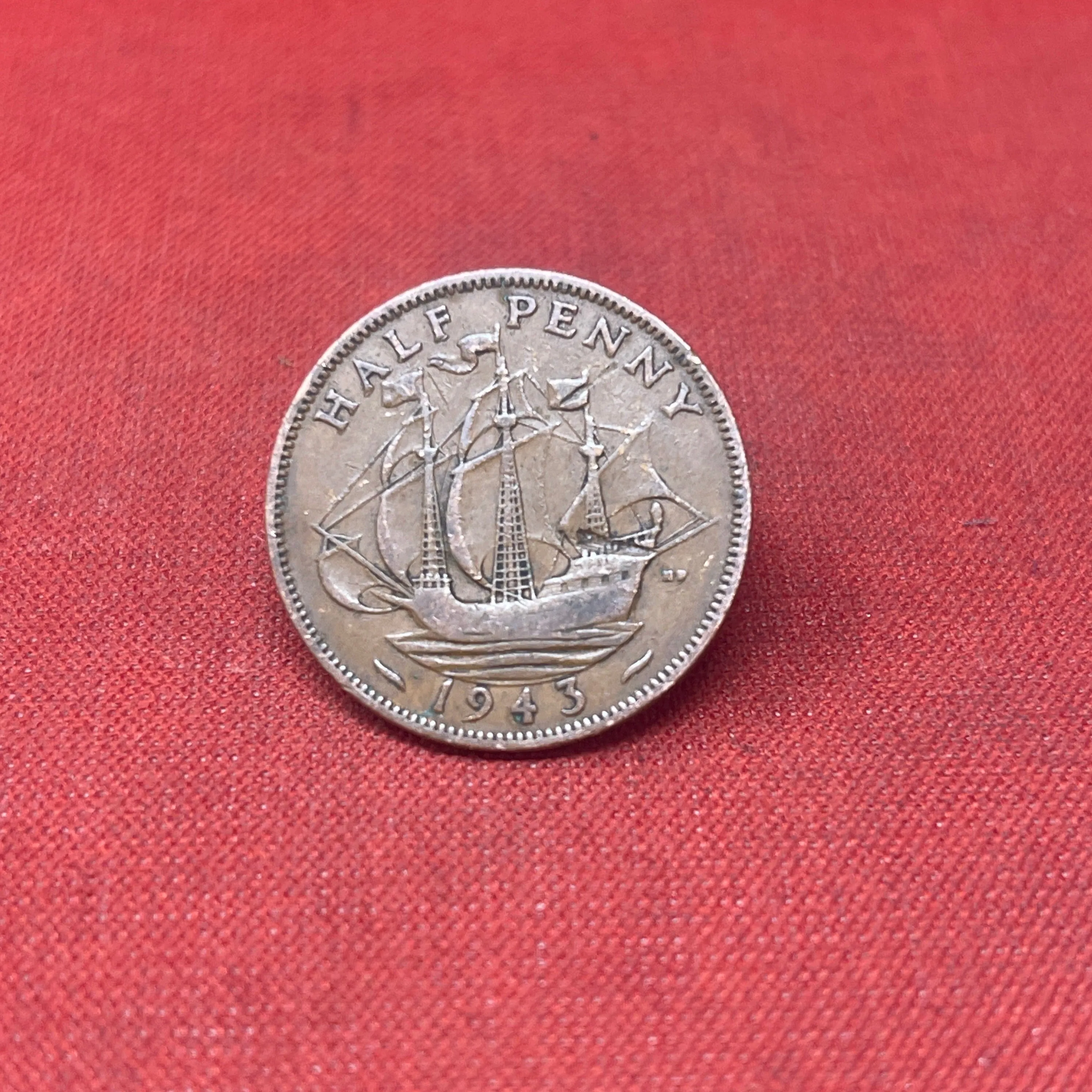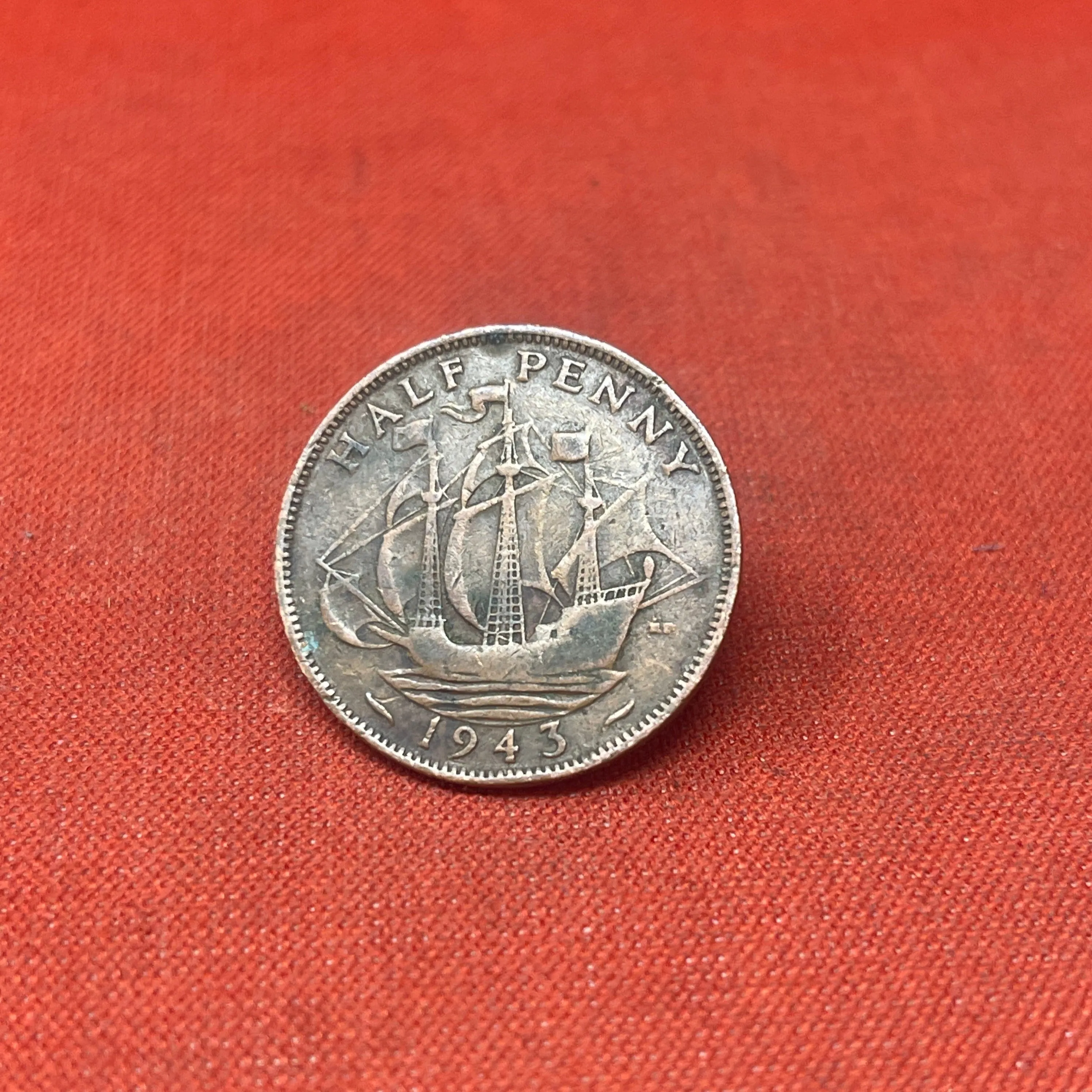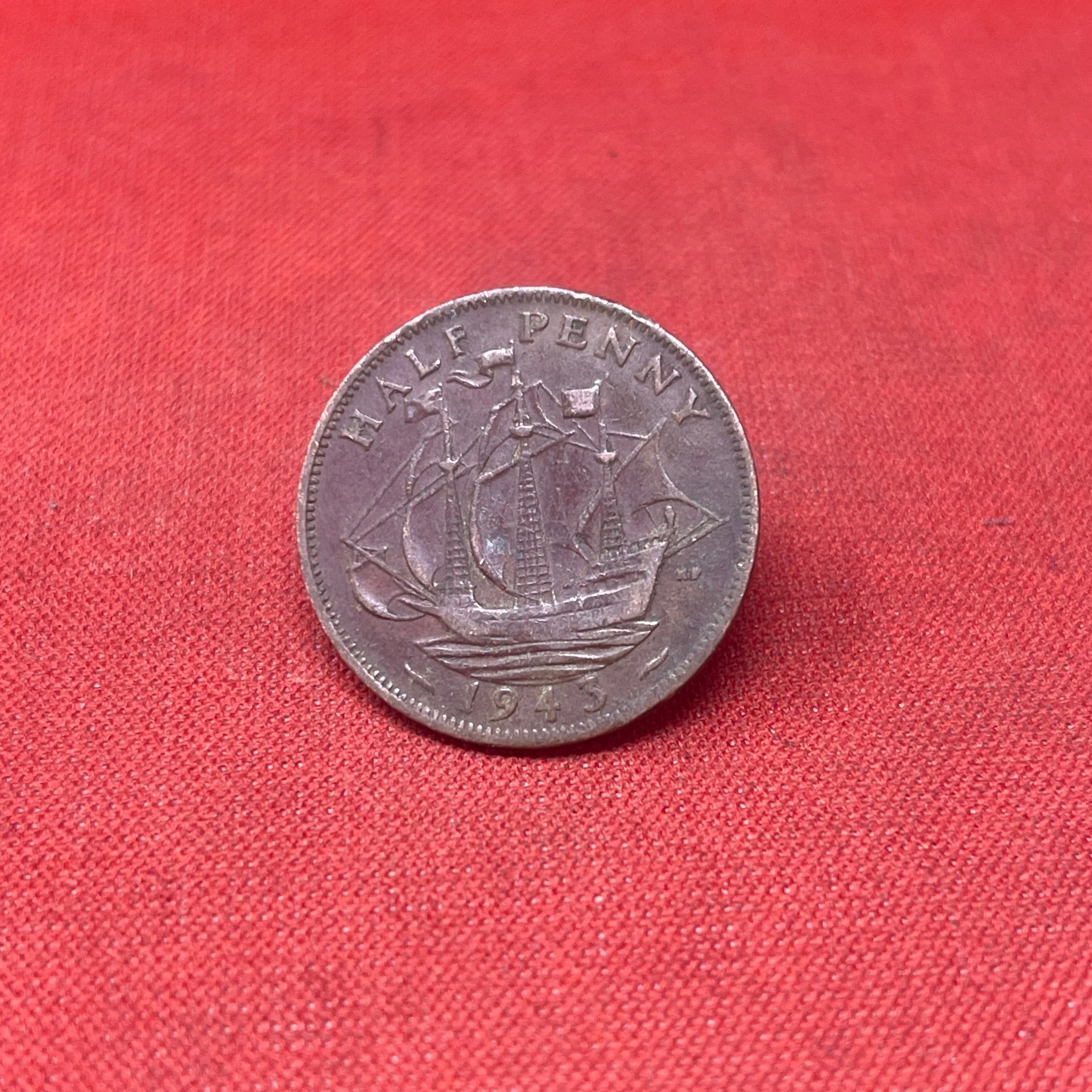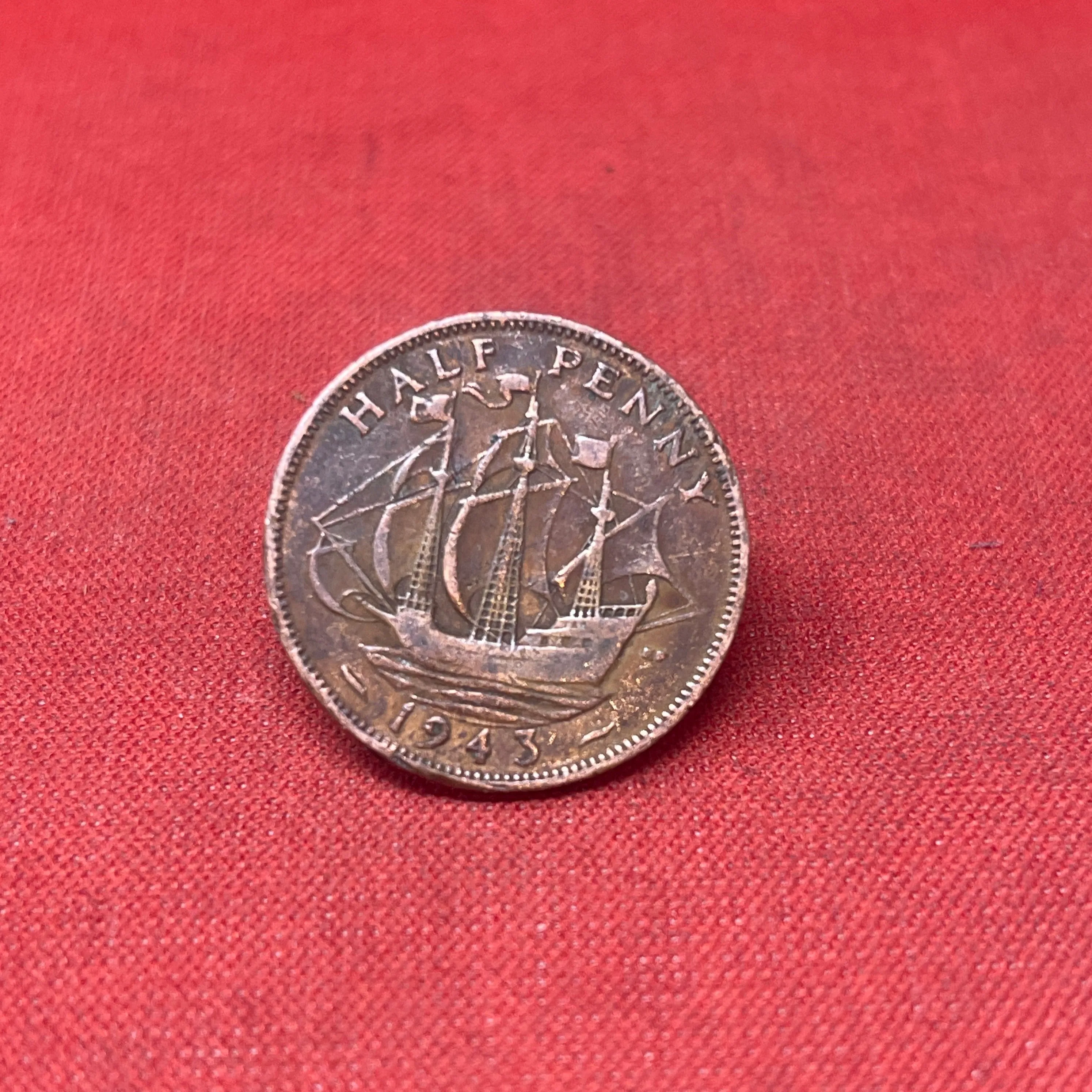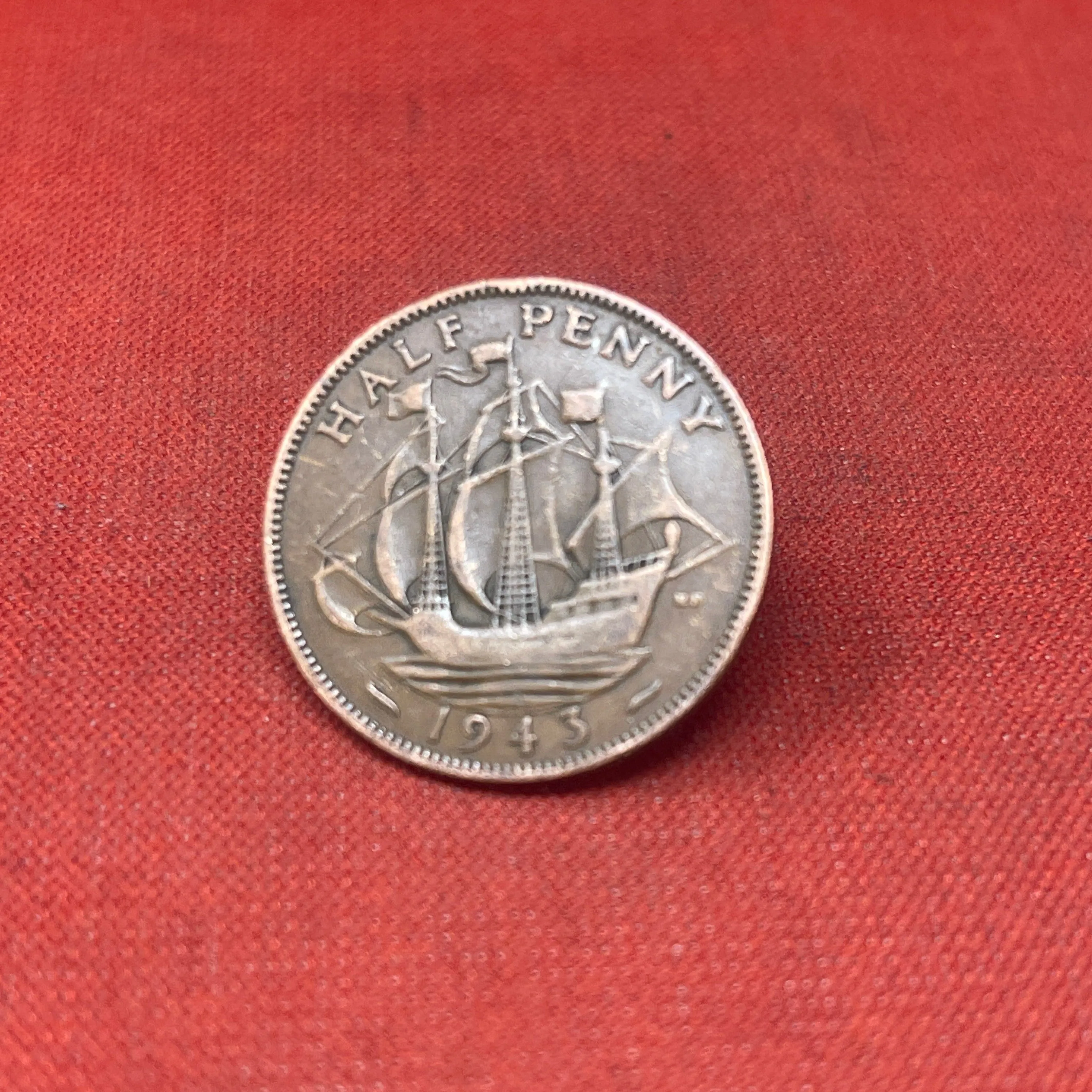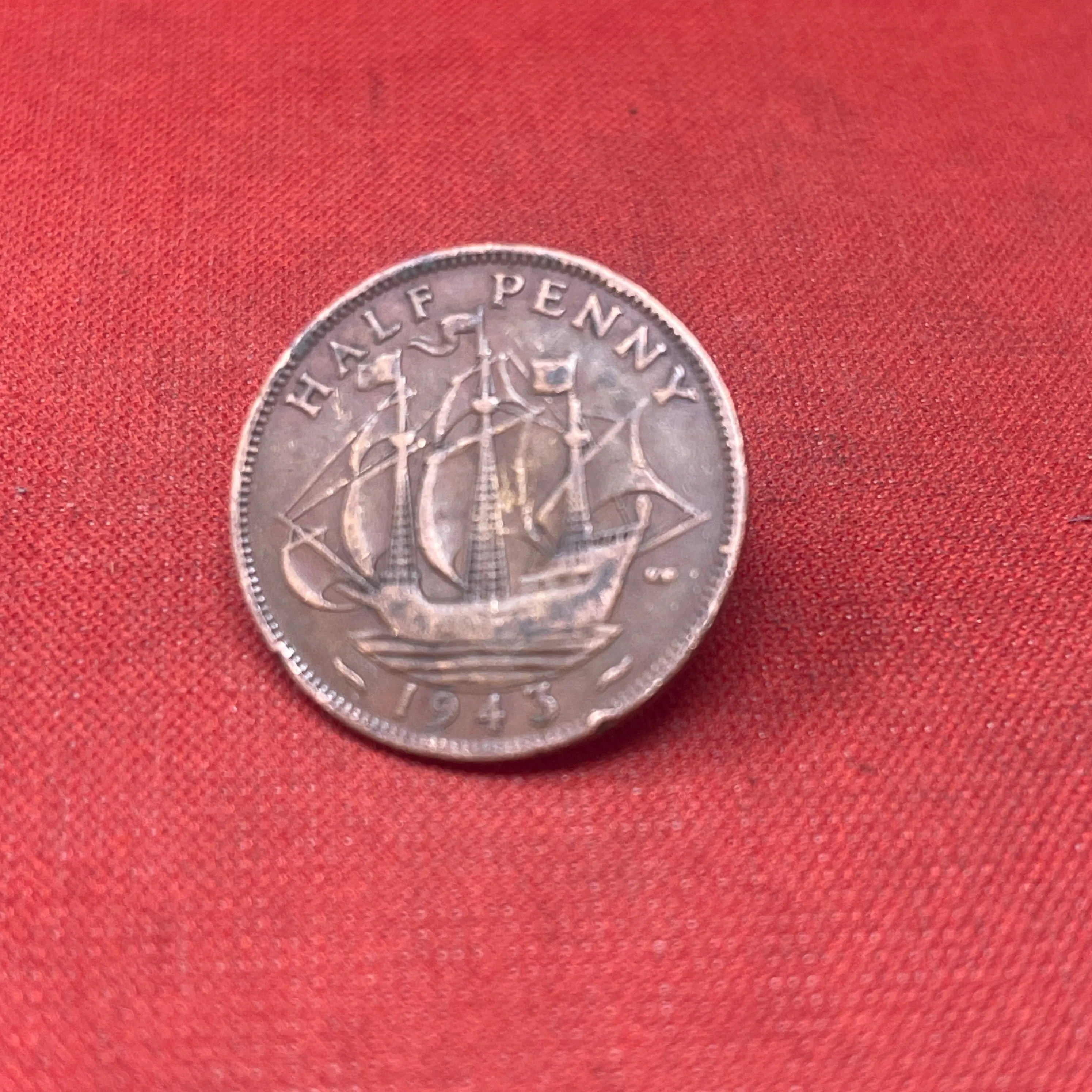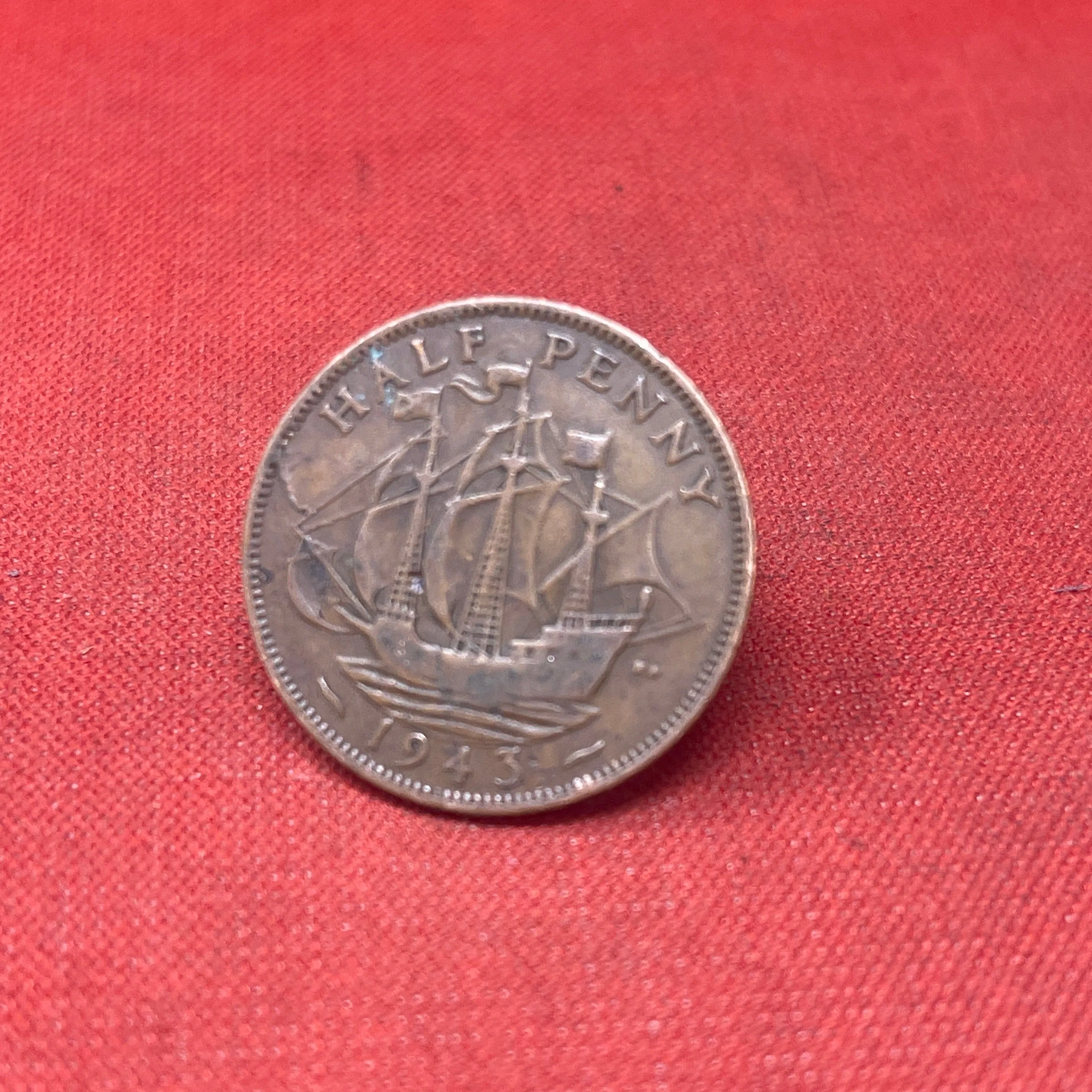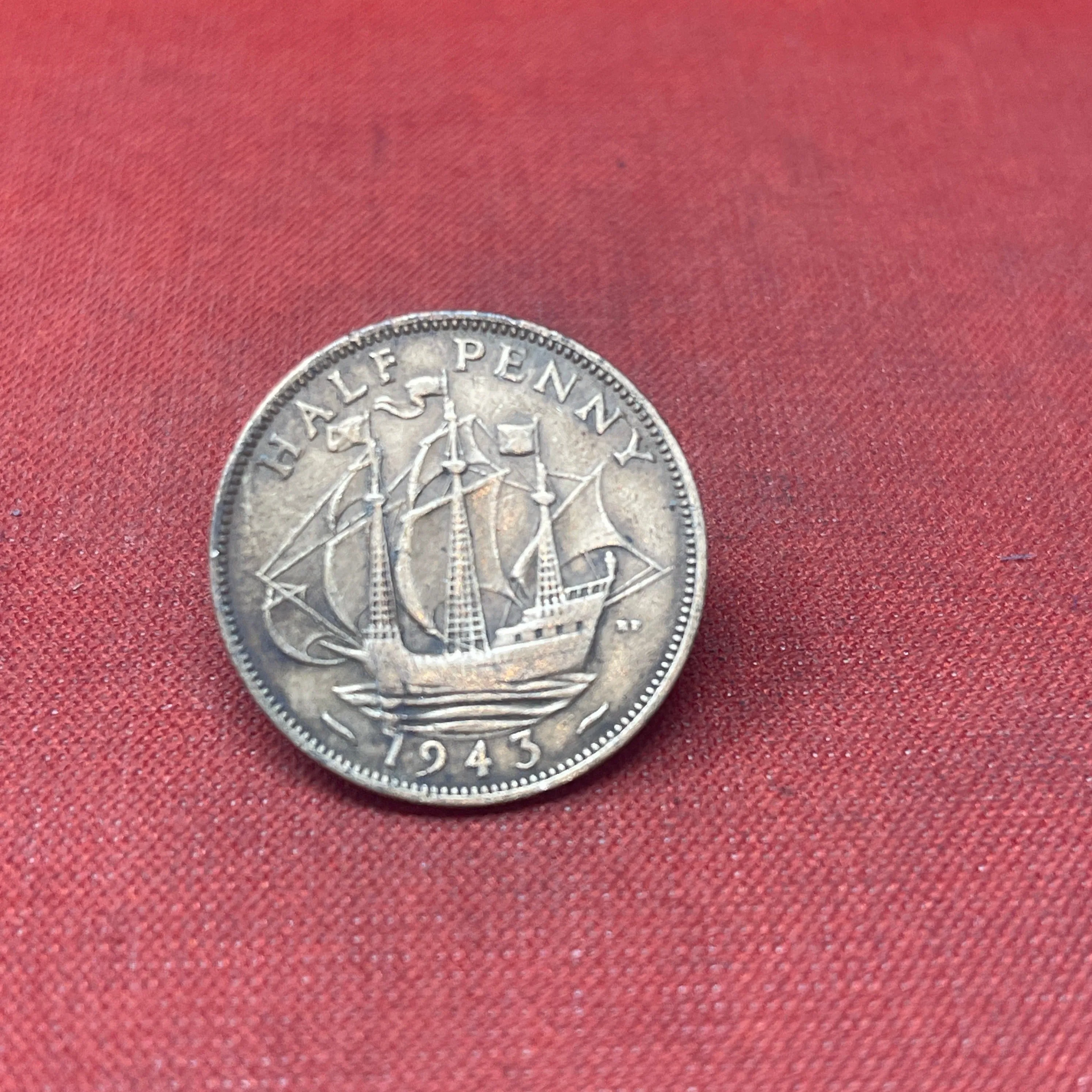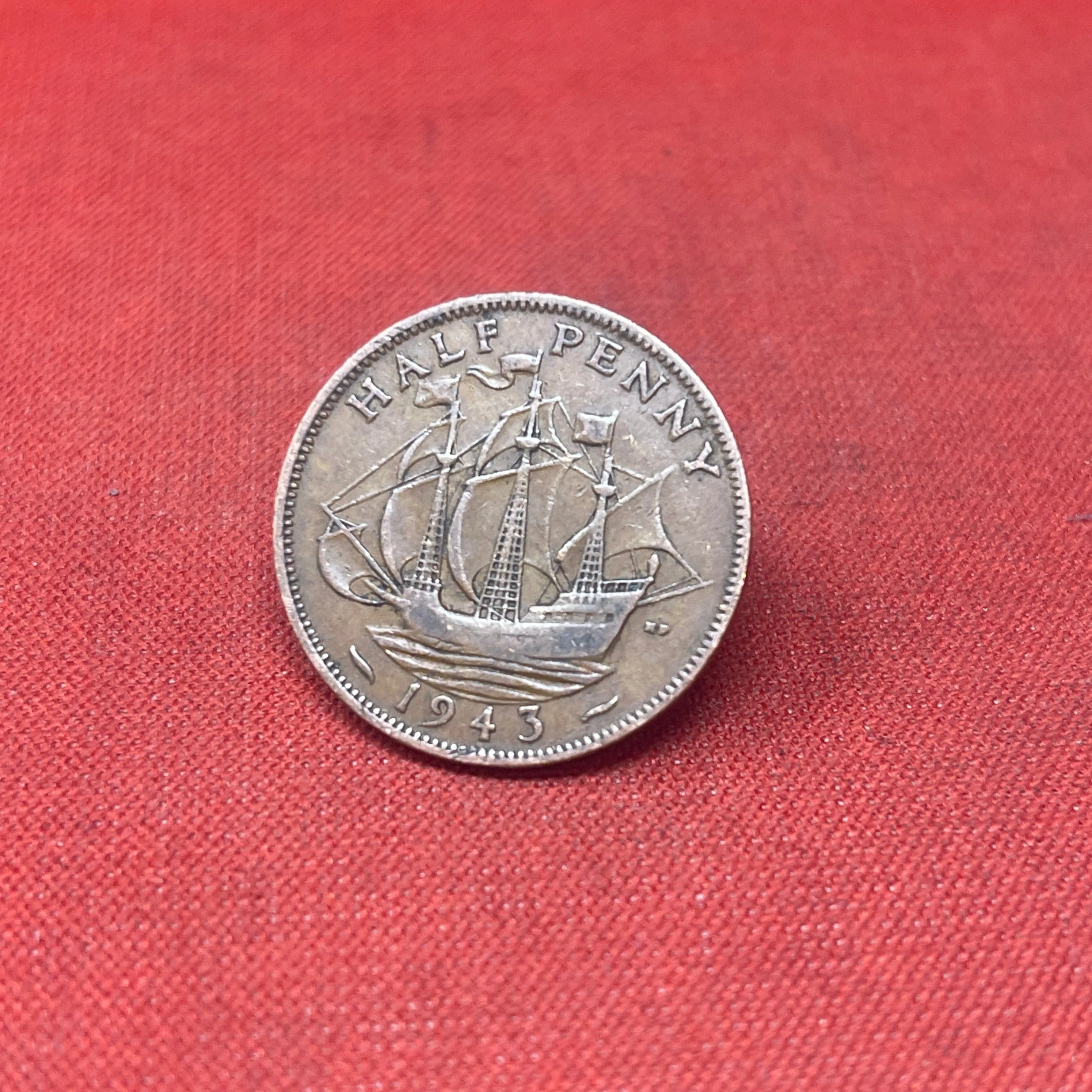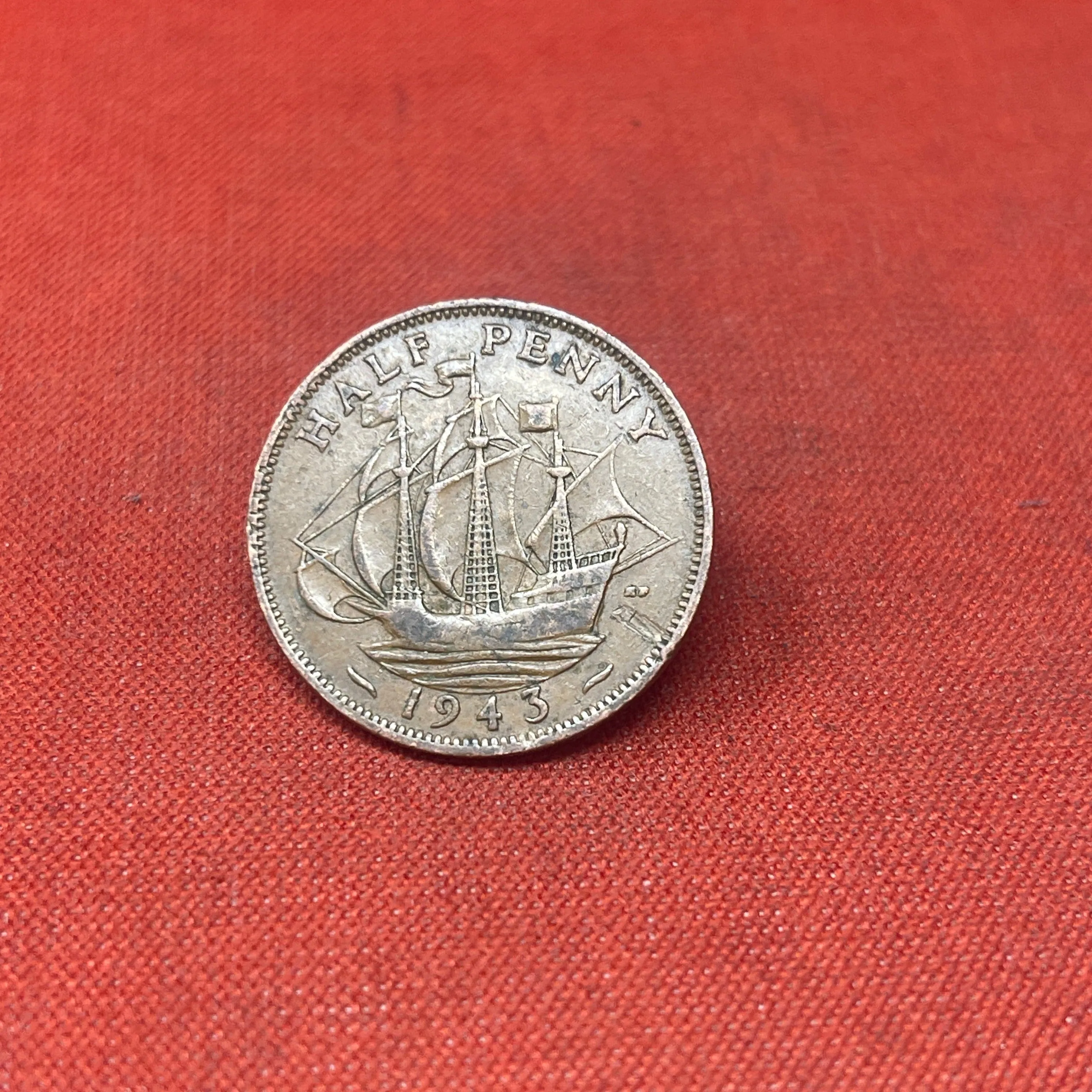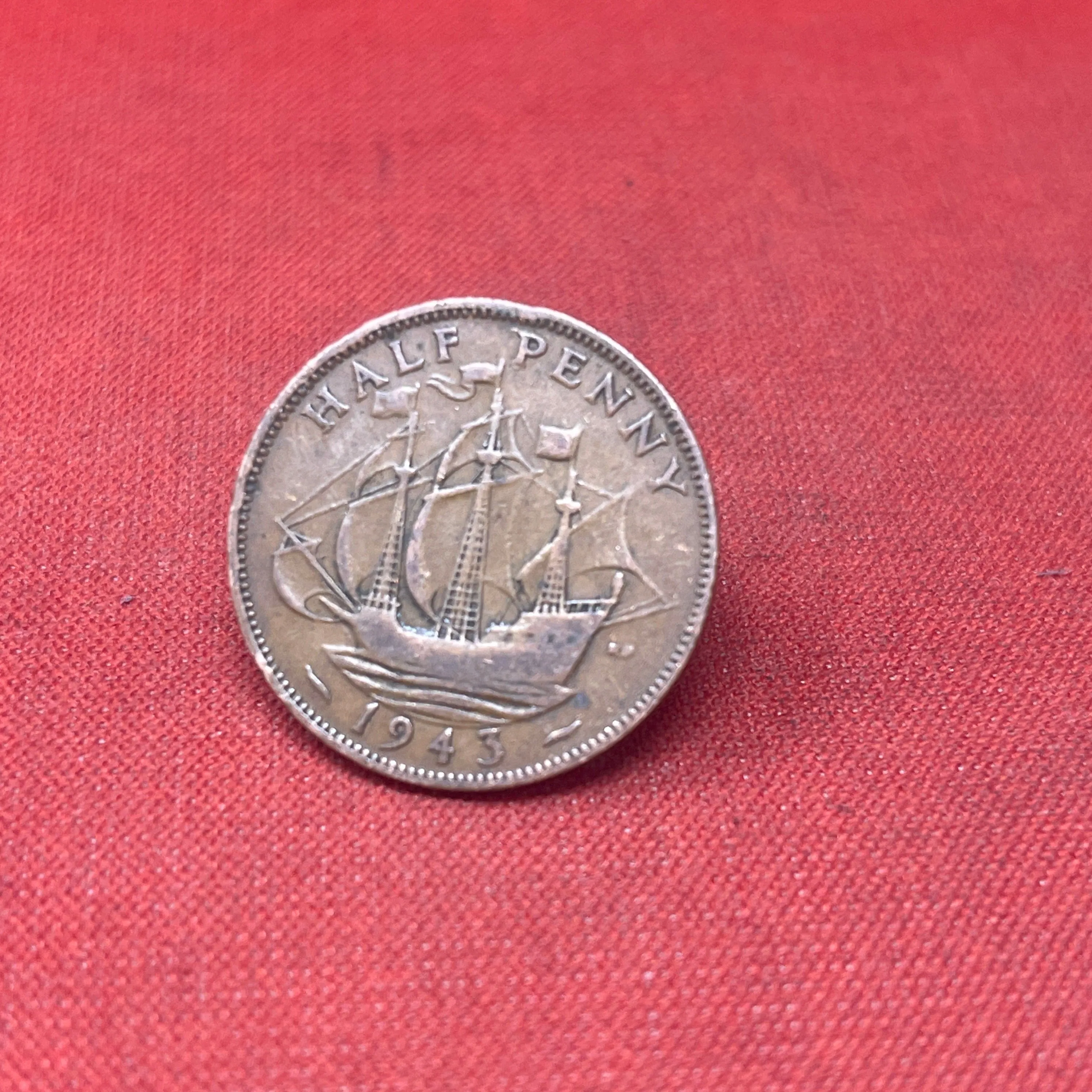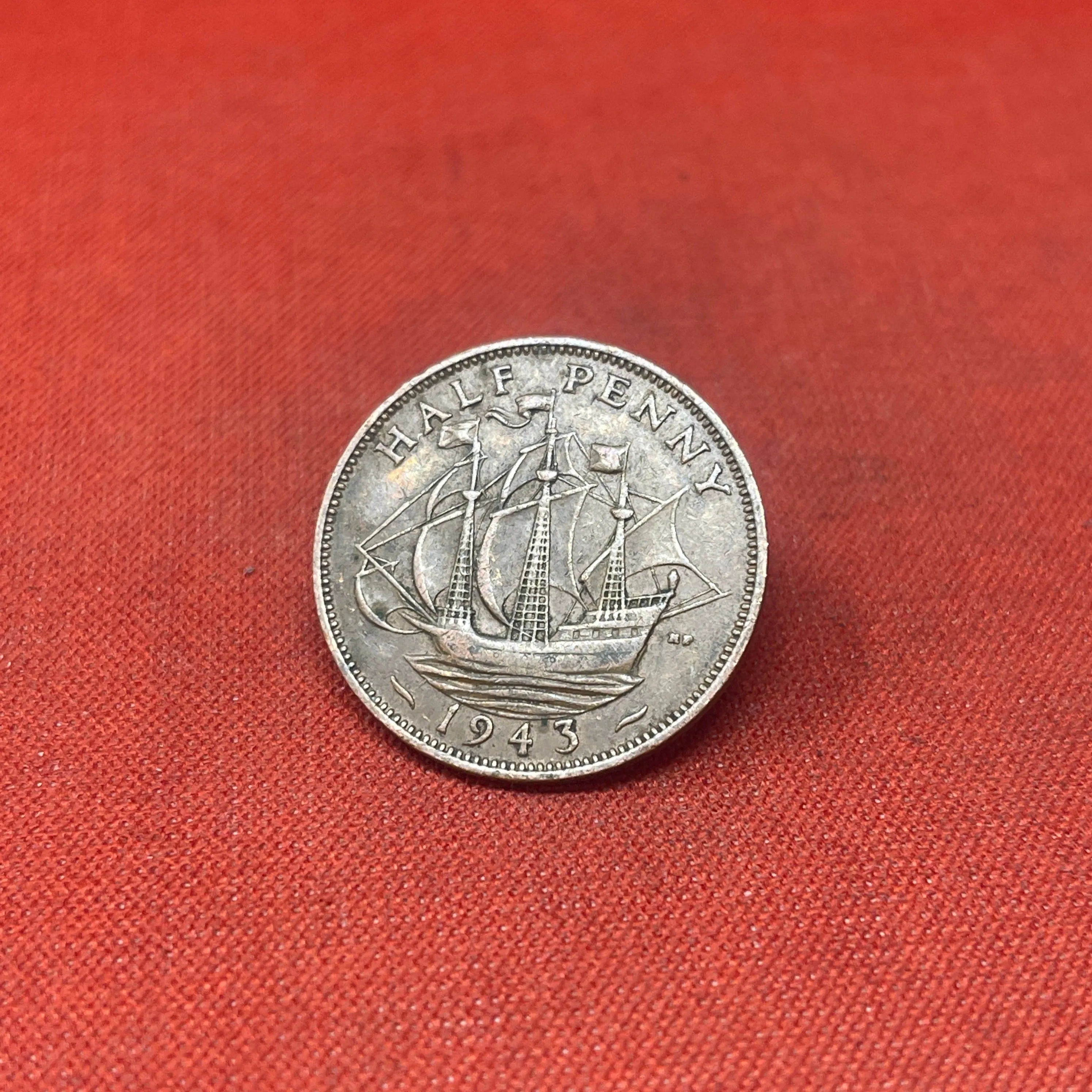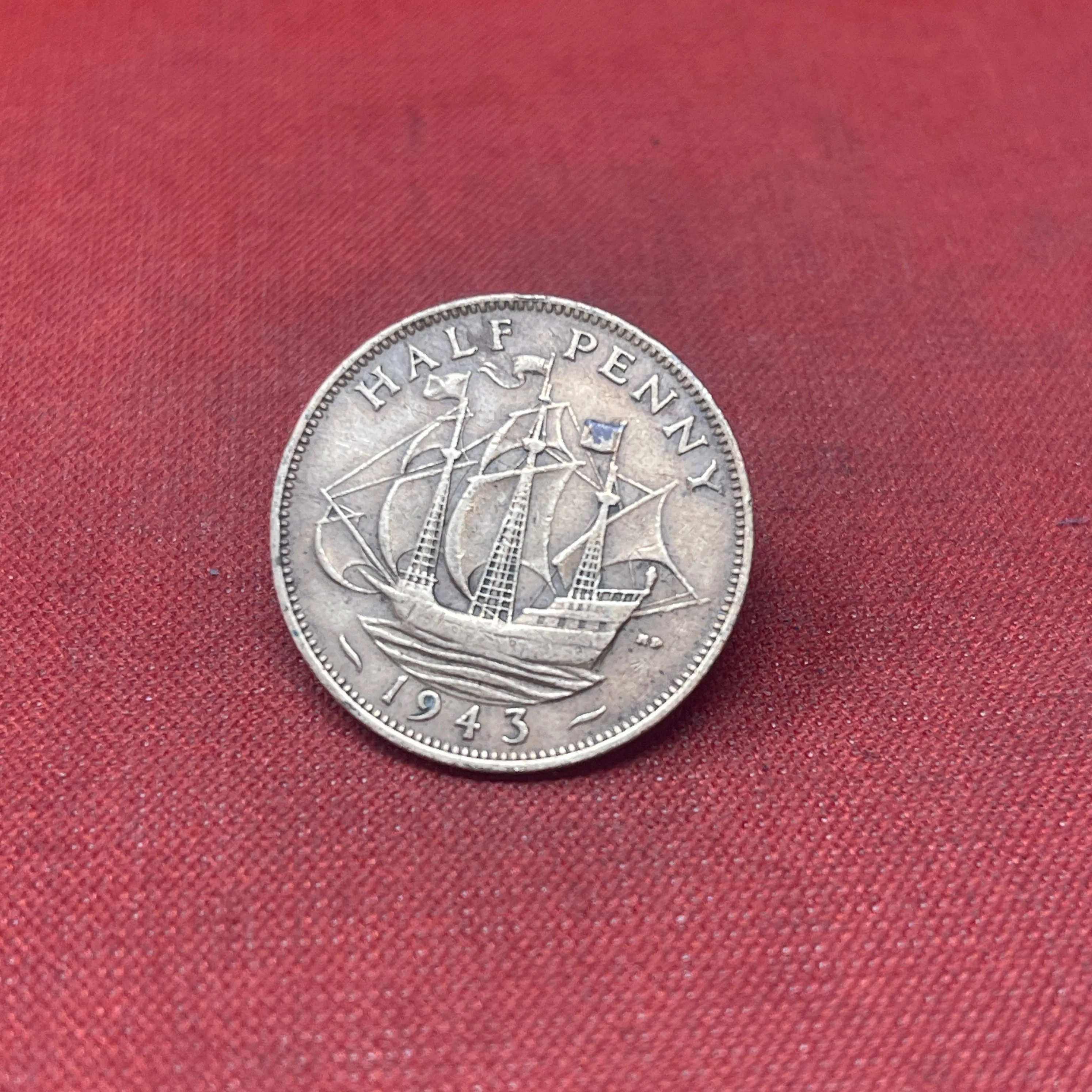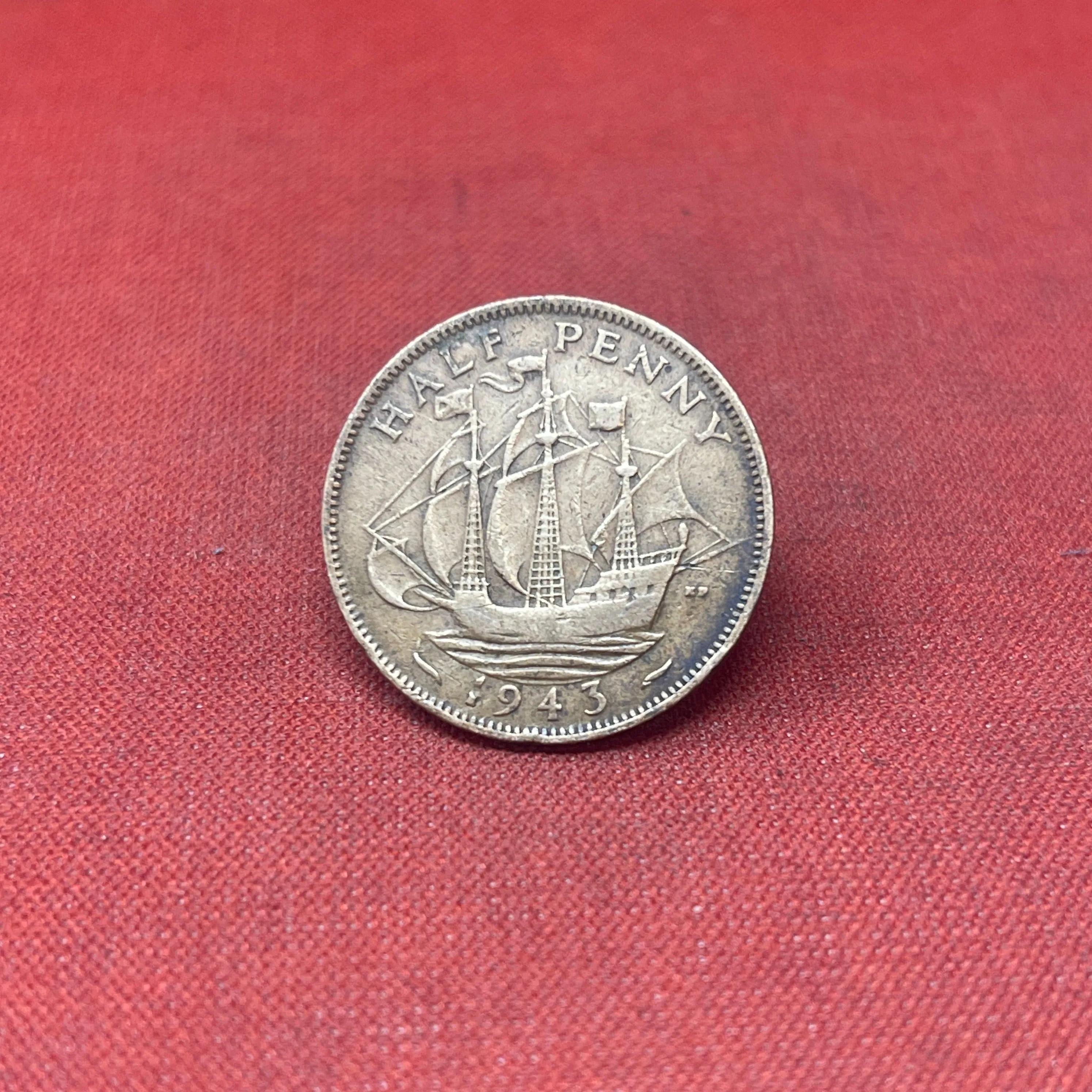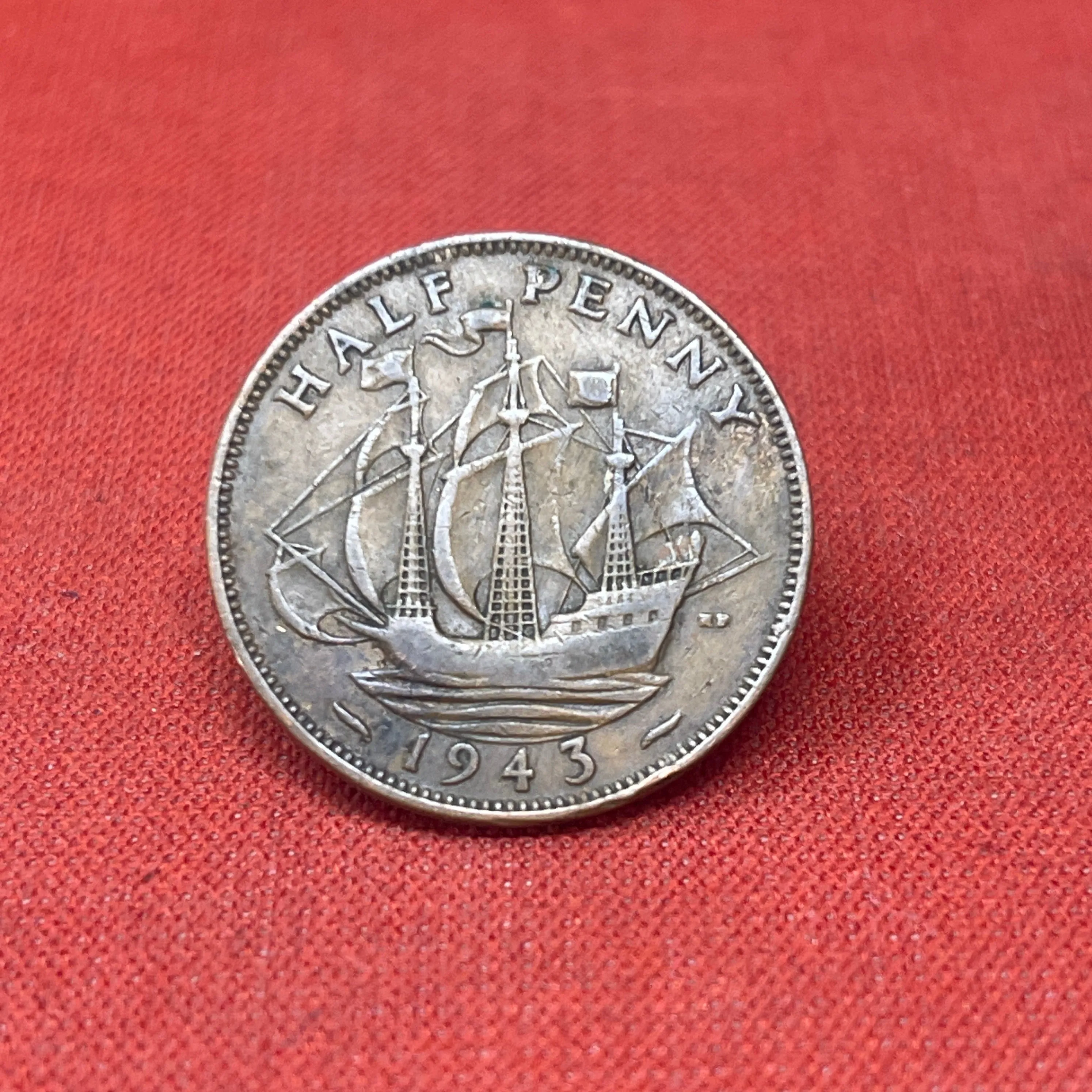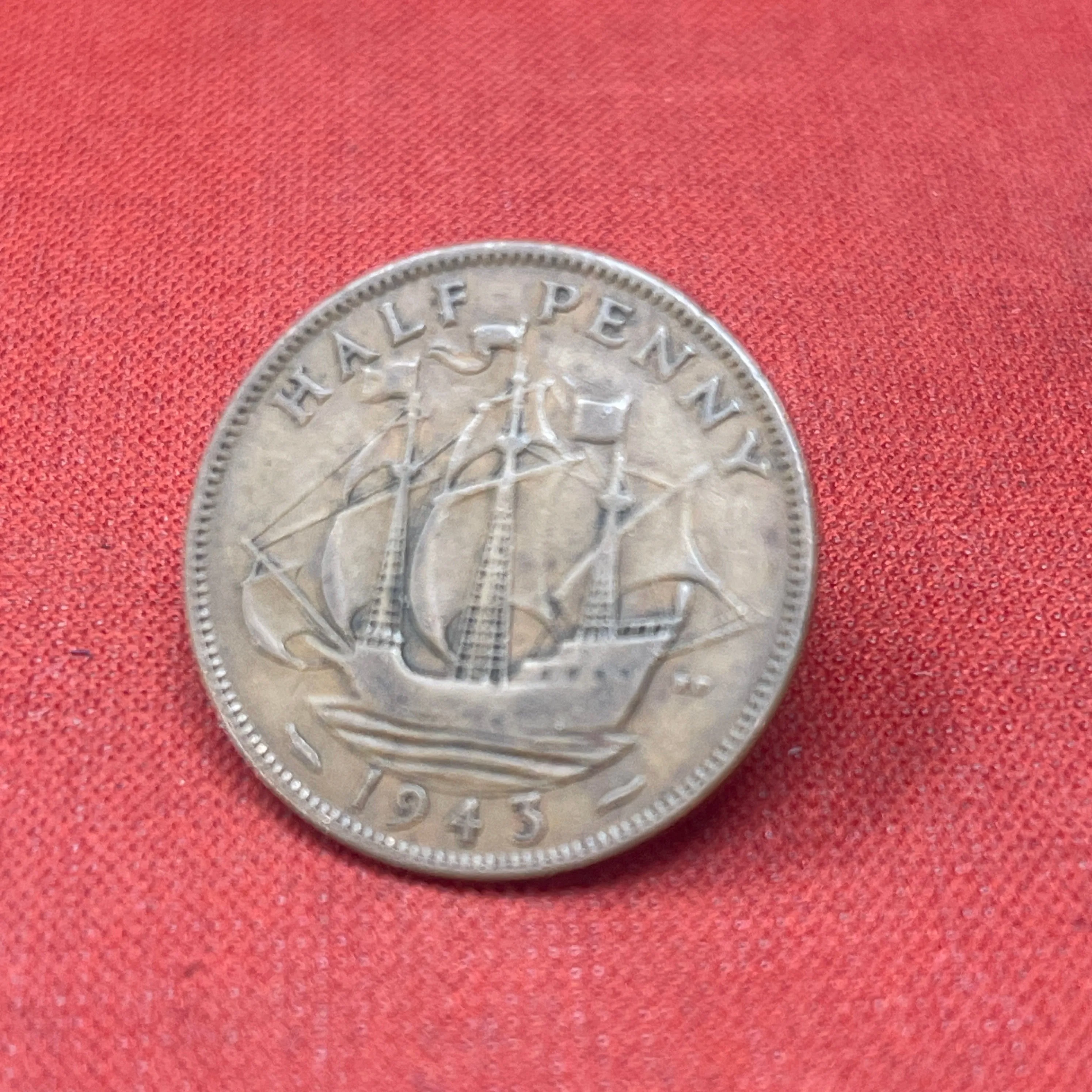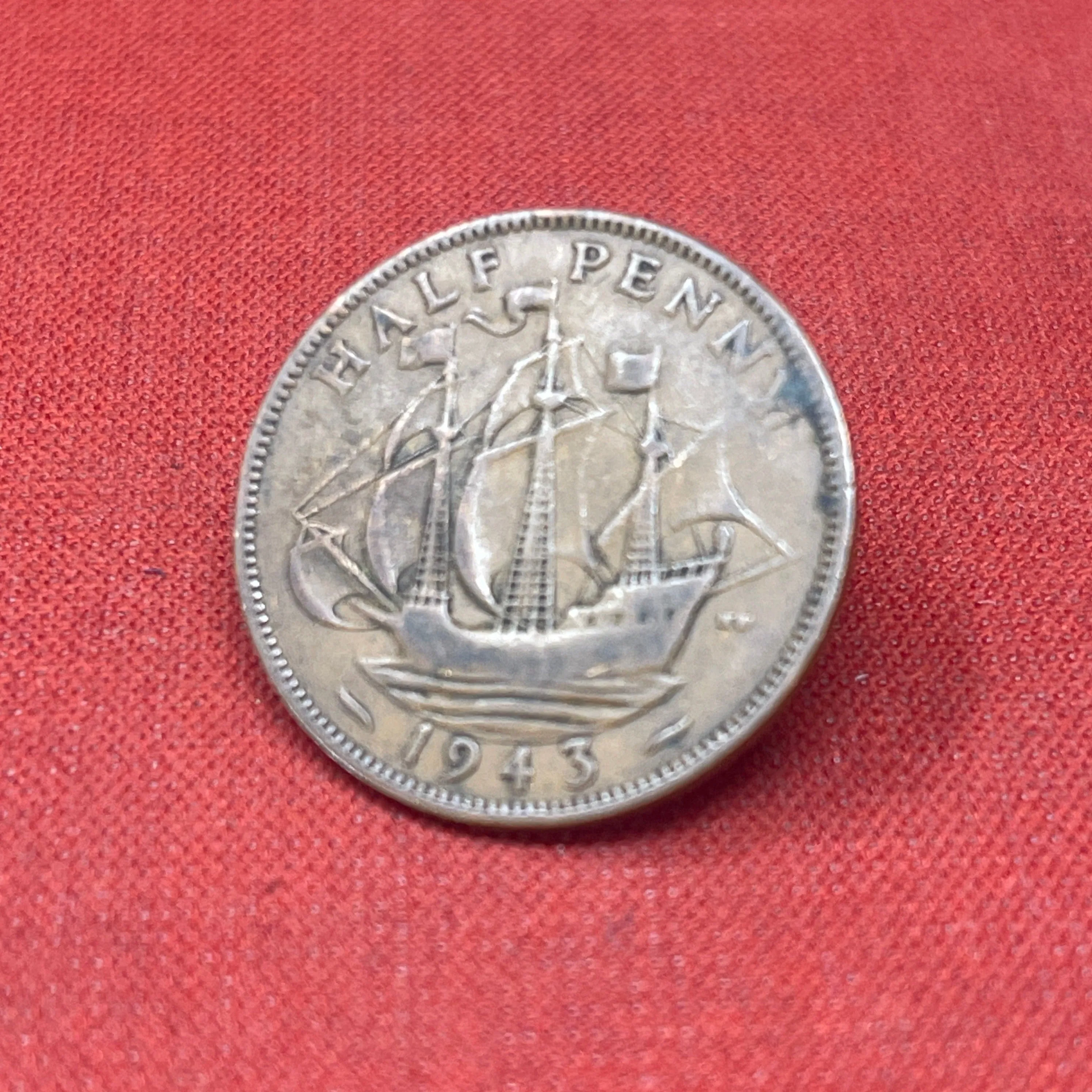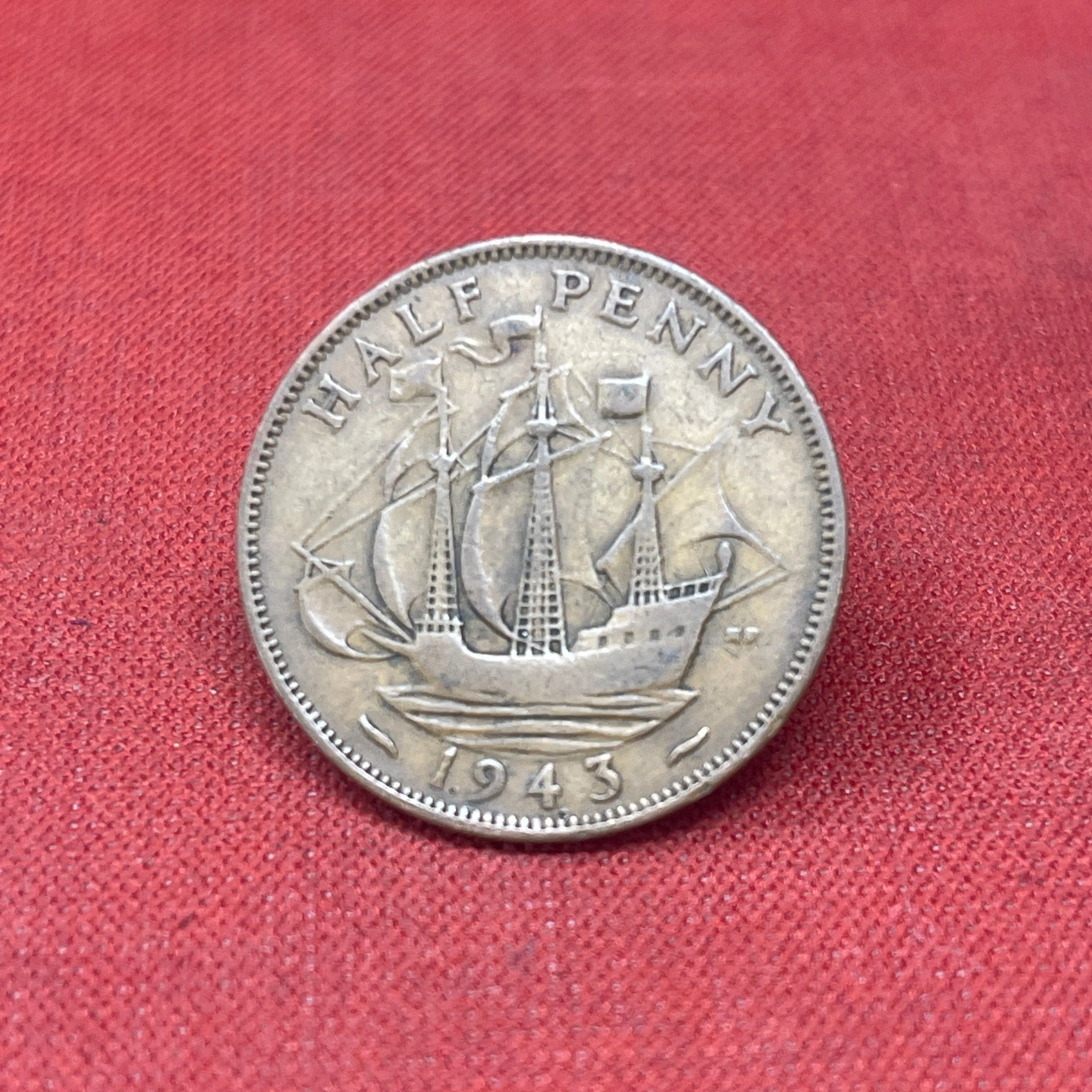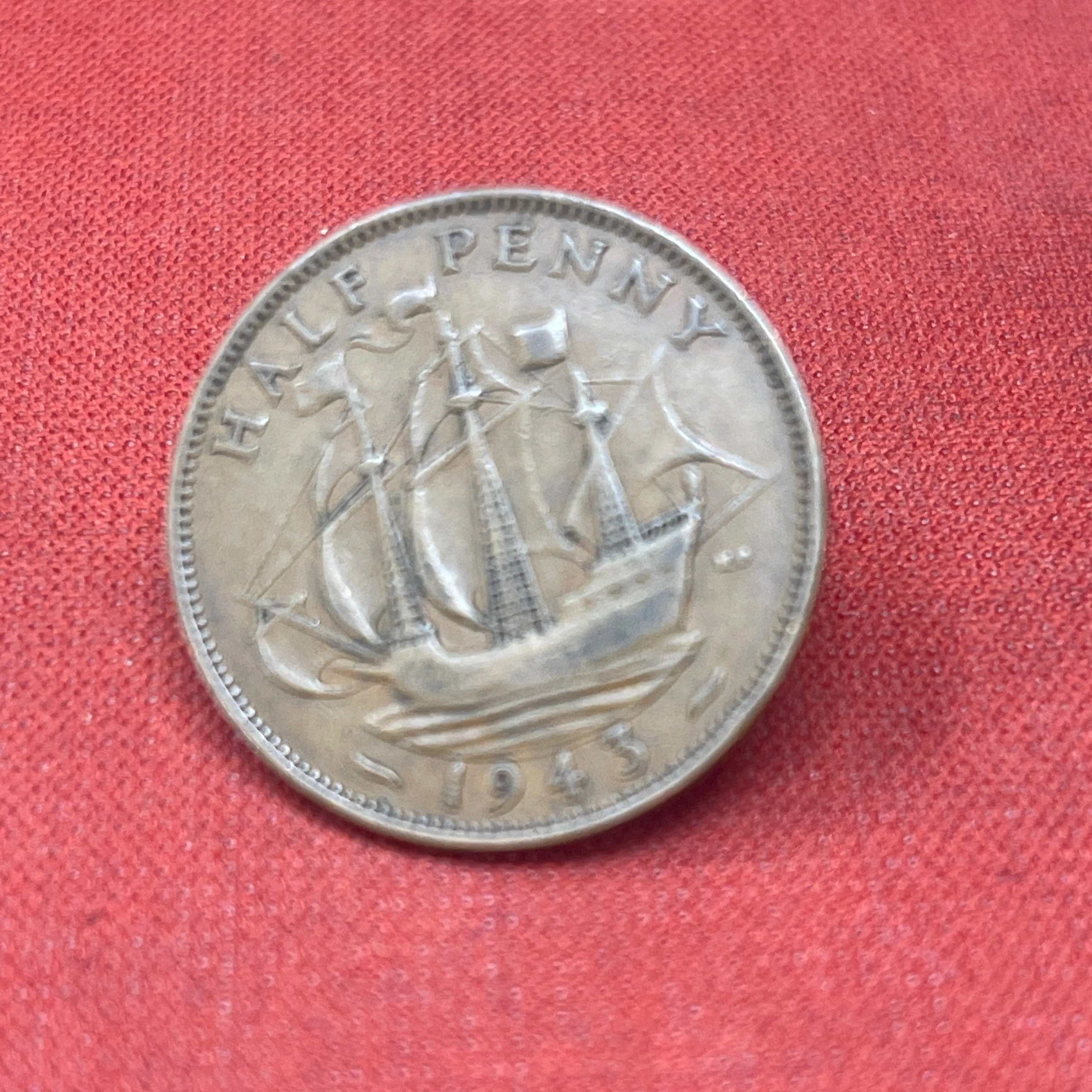The King George VI Half Penny coin is a significant piece of British numismatic history, minted from 1937 to 1952 during the reign of King George VI. This period was marked by profound changes, including the lead-up to and aftermath of World War II, making these coins a tangible link to an era of resilience and transformation in Britain.
Design and Specifications
Obverse: The obverse of the coin features a left-facing portrait of King George VI, crafted by Thomas Humphrey Paget. The inscription around the portrait reads "GEORGIVS VI D:G:BR:OMN
F:D:IND
" (George VI, by the Grace of God, King of all the Britains, Defender of the Faith, Emperor of India). After India gained independence in 1947, the inscription was changed to omit "IND
."
Reverse: The reverse, designed by Leonard Charles Wyon, showcases the Golden Hind, the famous galleon of Sir Francis Drake. The ship is depicted in full sail, symbolizing England's rich maritime history and the spirit of exploration. The inscription "HALF PENNY" and the year of minting are placed around the image.
Specifications:
- Composition: Bronze (97% copper, 2.5% zinc, 0.5% tin)
- Diameter: 25.5 mm
- Weight: 5.67 grams
- Edge: Plain
Historical Context
The King George VI Half Penny coin reflects a period of significant upheaval and adaptation. George VI ascended to the throne after the abdication of his brother, Edward VIII, in 1936. His reign saw Britain through the difficult war years and into the post-war recovery period. The coins issued during his reign provide a glimpse into the era's political and social changes.
The use of the Golden Hind on the reverse symbolizes Britain's naval heritage and its historic voyages of exploration and trade. This imagery was particularly resonant during and after the war, representing resilience and the enduring spirit of the British people.
Cultural and Collectible Significance
The King George VI Half Penny coins are highly regarded by collectors for their historical value and aesthetic appeal. The detailed depiction of the Golden Hind and the dignified portrait of George VI make these coins notable examples of mid-20th-century British coinage.
Coins from this period are valued not only for their historical context but also for their craftsmanship. Collectors often seek well-preserved examples with clear details and minimal wear. Special interest is given to coins minted in years with lower production numbers or notable historical events.
Collectability
The King George VI Half Pennies are a cornerstone for those collecting British coinage. Their availability varies, and coins in higher grades of preservation are especially prized. These coins are a favorite among numismatists for their combination of historical significance and design quality.
Conclusion
The King George VI Half Penny coin, minted from 1937 to 1952, offers a rich historical narrative encapsulated in bronze. It serves as a window into a transformative period in British history, marked by the reign of a monarch who guided his country through war and into a new era of peace. For collectors and history enthusiasts, these coins represent an enduring legacy of the British monarchy and its storied pas




